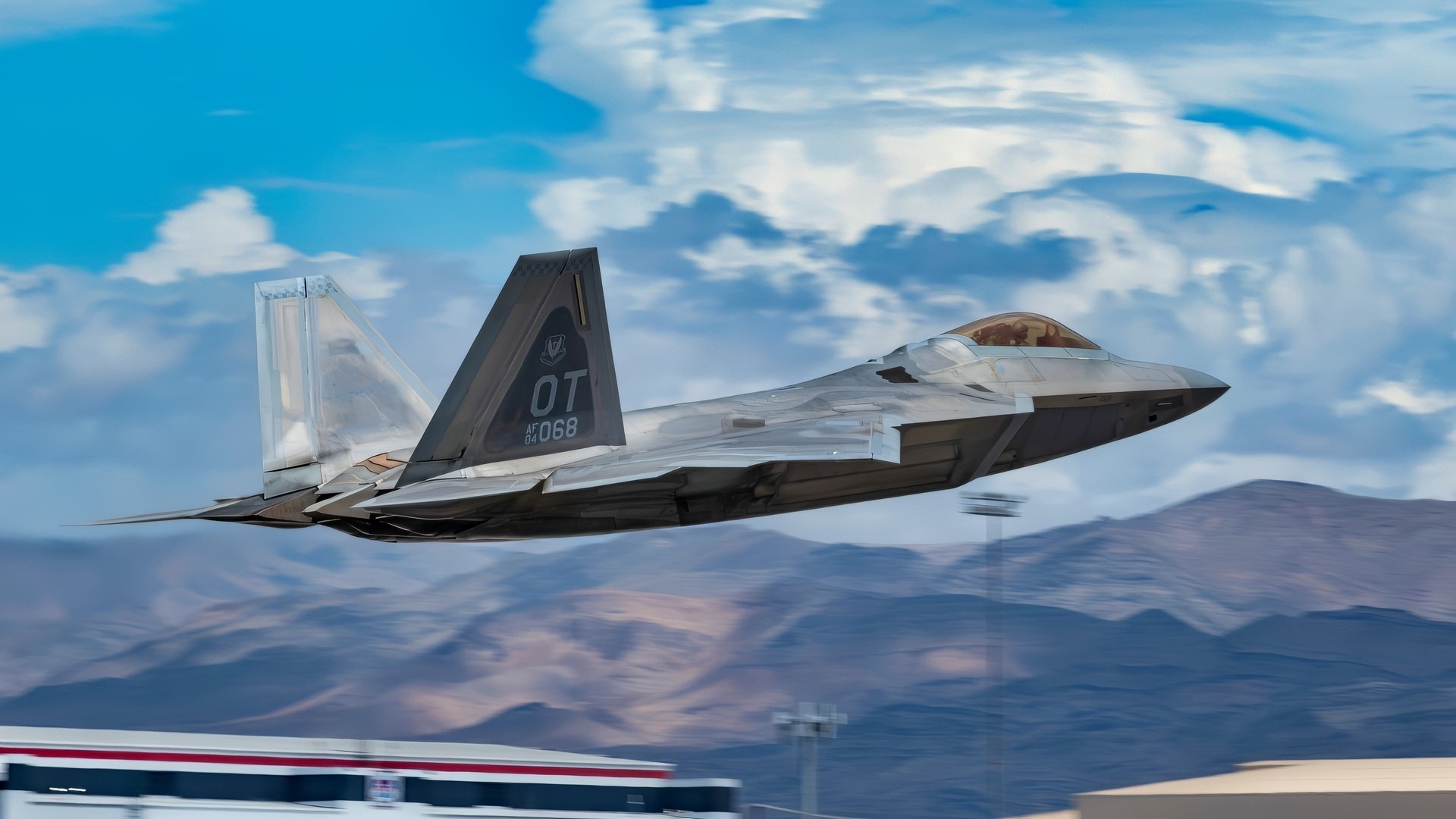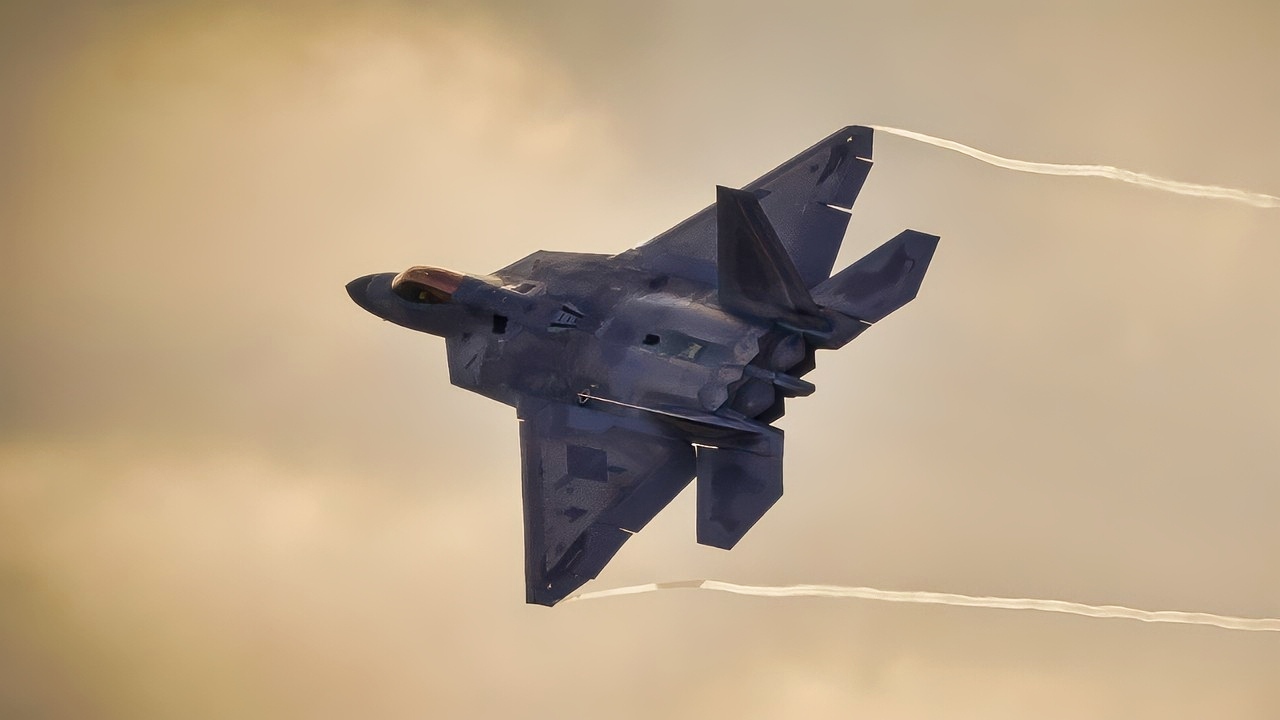Key Points and Summary – The USAF is pouring upgrades into the F-22—stealth refresh, sensor fusion, helmet cueing, and manned-unmanned teaming—reasserting it as the benchmark air-dominance fighter.
-Sweden’s JAS 39E/F counters with superb avionics, IRST, powerful EW, and Meteor missiles, plus low operating costs and strong networking.

JAS 39 Gripen. Image Credit: Creative Commons.

JAS 39 Gripen. Image Credit: Creative Commons.
-On performance, the twin-engine, thrust-vectoring Raptor holds higher ceiling, harder supercruise, and deeper low-observable advantages; the Gripen offers range and agility for its class.
-In most scenarios, the F-22 owns BVR and still rules WVR; a surprise, ace-flown Gripen could threaten. Different missions, different math—air superiority vs multirole affordability and availability.
F-22 Super vs JAS 39 Gripen: Can Sweden’s Best Touch the Raptor?
The F-22 has recently become a significant priority for the US Air Force. The military branch continues to invest significant resources in modernization efforts for the US’ existing F-22 fleet. These upgrades include improvements to avionics, stealth systems, engines, and integration with unmanned systems. This series of upgrades makes it well-suited to take on pretty much any existing aircraft on the planet. Many are even calling this newish F-22 the Super.
The JAS 39 Gripen, on the other hand, is Sweden’s most advanced fighter jet. Despite lacking stealth systems, the aircraft is equipped with a range of electronic warfare systems and advanced avionics to enhance its awareness and survivability.
But is it enough to take on the F-22?
The New and Improved F-22 ‘Supe’r vs the JAS 39 Gripen
The F-22 was born out of the Advanced Tactical Fighter (ATF) program in the 1980s in search of a new dedicated air-superiority fighter. The YF-22 prototype won the competition with its balance of stealth, speed, and maneuverability. Since its inception, the F-22 has remained one of the most advanced fighter jets on the planet until the introduction of the F-35 (even then, some people still maintain that the F-22 outperforms the F-35 in many areas).
Currently, the F-22 is undergoing a massive modernization effort that improves its stealth capabilities and overhauls its avionics. This effort aims to pave the way for the F-47 and test new technologies, such as manned-unmanned teaming.

A U.S. Air Force F-22 Raptor fighter jet assigned to the 422nd Test and Evaluation Squadron (TES), takes off for a mission at Nellis Air Force Base, Nevada, Aug. 26, 2025. The 422nd TES is a geographically separated unit of the 53rd Test and Evaluation Group, Eglin AFB, Florida. (U.S. Air Force photo by William R. Lewis)

A U.S. Air Force F-22 Raptor assigned to the 90th Fighter Squadron soars over Joint Base Elmendorf-Richardson during ARCTIC EDGE 2025 (AE25), Aug. 18, 2025. AE25 provided Special Operations Command North the opportunity to test a range of capabilities and response options to deter, disrupt, degrade, and deny competitor activity in the Arctic in support of globally integrated layered defense of the homeland. AE25 is a NORAD and U.S. Northern Command-led homeland defense exercise designed to improve readiness, demonstrate capabilities, and enhance Joint and Allied Force interoperability in the Arctic. (U.S. Air Force photo by Airman 1st Class Gracelyn Hess)
The JAS 39, on the other hand, was developed by Saab Industries in Sweden during the mid-90s. It was designed as a multirole combat aircraft. Earlier variants of the JAS 39 were met with moderate success, but with the newer E/F variants, the aircraft has seen much more success on the international market. The aircraft features a single engine and a canard-delta wing configuration for a solid aerodynamic profile and good maneuverability. While it lacks the stealth features of the F-22, the JAS 39 sports sophisticated avionics and state-of-the-art electronic warfare suites to enhance survivability.
Stealth and Avionics
The F-22 was designed from the ground up for low observability, featuring radar-absorbent coatings, internal weapons bays, and shaping that minimizes radar cross-section from all angles. Its avionics suite integrates advanced sensor fusion, datalinks, and electronic warfare systems, giving pilots unmatched situational awareness in contested environments.
The newest versions of the F-22 go even further, with improved radar, helmet-mounted displays (finally), and integration with unmanned systems.
While the JAS 39 may lack the F-22’s stealth systems, it too features its share of advanced avionics. The aircraft is equipped with advanced electronic warfare systems, an AESA radar, and an infrared search and track system.

F-22 Raptor Firing Missile. Image Credit: Creative Commons.
Its networking capabilities allow Gripen formations to share sensor data in real time, creating a distributed awareness that can partially offset its lack of stealth. Swedish engineers have emphasized electronic countermeasures and decoys, making the Gripen harder to target than its radar signature alone would suggest.
Engine Performance and Armament
Performance-wise, the F-22 is powered by two Pratt & Whitney F119 engines, enabling speeds up to Mach 2.25 and sustained supercruise at Mach 1.5 without afterburners. It boasts a ceiling of around 65,000 feet and an exceptional climb rate of over 300 meters per second.
The F-22’s engines also feature 2D thrust-vectoring nozzles, which significantly enhance its maneuverability. The JAS 39, equipped with a single GE RM16 engine, achieves Mach 2.0 and can supercruise at Mach 1.2.
Its ceiling is lower at approximately 52,000 feet, and its climb rate is slightly less aggressive. In terms of range, the Gripen E has a longer ferry range and combat radius than the F-22, though the Raptor’s internal fuel and stealth configuration prioritize survivability over endurance.
When it comes to armament, the F-22 carries AIM-120 AMRAAMs and AIM-9X Sidewinders internally, preserving its stealth profile, and can also deploy precision-guided bombs for strike missions.
The JAS 39 integrates the Meteor BVR missile, which is considered by some as one of the most capable air-to-air weapons in service, along with IRST-guided short-range missiles. Both aircraft are rated for nine-g maneuvers, but the Gripen’s lightweight design and relaxed stability make it exceptionally nimble in close combat.
The F-22, however, benefits from thrust-vectoring nozzles, giving it superior post-stall maneuverability in dogfights.
Does the JAS 39 Stand a Chance? In 2 Words: Stealth Wins?
In a hypothetical one-on-one engagement, the F-22 would hold a clear advantage in beyond-visual-range combat. Its stealth and sensor fusion capabilities would enable it to detect and engage the Gripen before being detected, giving it the coveted first-look, first-shot advantage. In close-range combat, the JAS 39 has a slightly better chance, but only slightly.
With its thrust-vectoring engines, the F-22 is far more maneuverable than the JAS 39, and its stealth systems once again make it difficult to achieve a lock on from the front. With an exceptional pilot and the element of surprise, the JAS 39 might be able to take out an F-22.
When comparing these two fighters, it is essential to consider the roles for which they were designed. The F-22, for example, was built for air dominance. It was designed to penetrate contested airspace and defeat the most advanced threats.
The JAS 39, on the other hand, excels in affordability, ease of maintenance, and adaptability. It offers a pragmatic solution for nations seeking a capable multirole fighter without the logistical burden of a fifth-generation platform.
While the F-22 would almost certainly win a clean one-on-one duel in most conditions, the Gripen’s operational flexibility and cost-effectiveness make it a formidable competitor in real-world campaigns where numbers, availability, and sustainment matter as much as raw performance.
About the Author: Isaac Seitz
Isaac Seitz, a Defense Columnist, graduated from Patrick Henry College’s Strategic Intelligence and National Security program. He has also studied Russian at Middlebury Language Schools and has worked as an intelligence Analyst in the private sector.
More Military
‘Skipper, We Have Been Hit’: Tiny Nuclear Sub ‘Sank’ $4.5 Billion U.S. Navy Aircraft Carrier
China’s Military ‘Quantum Leap’ Doesn’t Add Up
Russia’s Air Defenses Are Springing Leaks—and Ukraine Is Exploiting Them
Japan Might Be Ready to Fight for Taiwan. Would America Do the Same?










